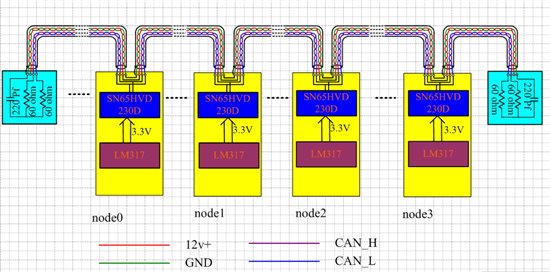the datasheet of SN65HVD230D shows the device will not Disturb the Bus if it is Unpowered. But I find if one node is only connected by power+, GND is not connected. the whole CAN bus will not work normally. can anybody help me analisys the phynomenon ? the block diagram is showed below. input power is 12v, LM317 regurates the 12v to 3.3v for SN65HVD230D.
-
Ask a related question
What is a related question?A related question is a question created from another question. When the related question is created, it will be automatically linked to the original question.


